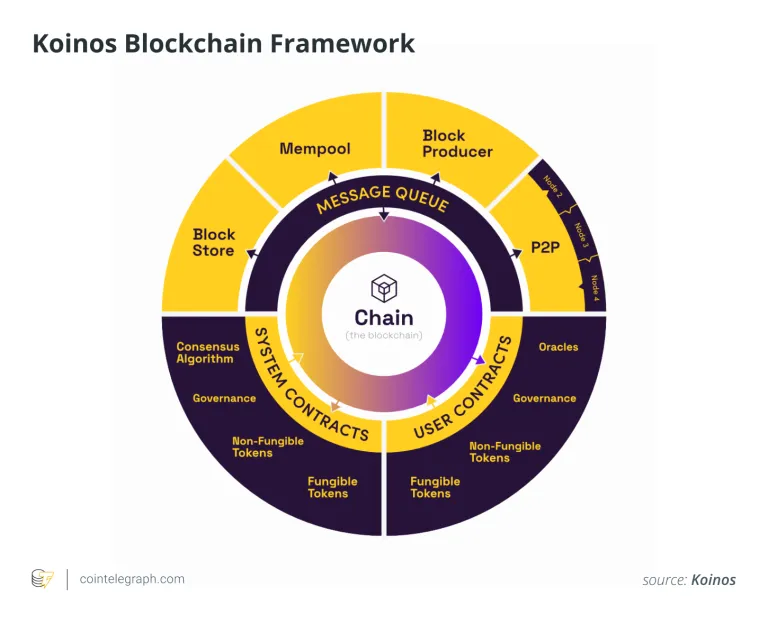Since free-to-use decentralized applications are possible, developers should have a path to acquire sources to support their DApp’s growth.Cointelegraph is following the development of an entirely new blockchain from inception to mainnet and beyond through its series, Inside the Blockchain Developer’s Mind, written by Andrew Levine of Koinos Group.
In my previous article, I explained from first principles what was needed to build a truly free-to-use social decentralized application (DApp) and how Koinos is that solution. In that article, I explained that to deliver a truly free-to-use DApp, it must be possible for someone other than the end-user to provide the network resources (“mana” in the case of Koinos) required to run a given smart contract.
Blockchain mana
Now that we understand why Koinos is designed the way it is (to support free-to-use experiences), I’m going to explain in more detail how this works. One of the innovative features of Koinos is its novel fee-less mechanism, called “mana,” which allows KOIN holders to use the blockchain for free without having to pre-stake their tokens or even think about what they’re doing. It’s the core technology that allows people to use the blockchain for free.

Koinos is designed around the idea that from the moment someone acquires KOIN, they should be able to perform actions on the network while Koinos incrementally and temporarily locks small amounts of their tokens, effectively “charging” them in opportunity cost instead of an explicit fee. Mana is how the system quantifies that opportunity cost so that users can exchange time (opportunity cost) for network resources, thereby replacing the need for a token-based fee like Ethereum’s gas model.
Related: Inside the blockchain developers’ mind: How to build the next big social DApp
Game-like experience
This creates a fun, game-like user experience for the blockchain, but what about decentralized applications on the blockchain? As the native currency of the Koinos blockchain, only KOIN will have the mana that users will need to freely use the blockchain. But if KOIN is the only token with mana, then won’t users have to acquire the token to use any Koinos DApps and wouldn’t this feel a lot like a fee? Yes, it would.
While the user experience is certainly superior to a real fee, since the user will only have to make that purchase once, it does still create friction in the DApp user’s experience. From our work on Steem, we saw that this requirement, when combined with the requirement to purchase usernames and consciously stake a large number of tokens, were major barriers to adoption. That’s why we designed Koinos from the ground up to solve this problem while solving several other important problems, like poor upgradeability and limited programming language support, along the way.
Related: Inside the blockchain developer’s mind: What is a testnet?
Mana sponsorships
To solve the problem of allowing people to use DApps without first having to acquire any token whatsoever, Koinos allows smart contract developers to specify who will pay the mana when the smart contract is run (“Payer/Payee Semantics”). That could be the user, the developer or someone else entirely — like a large stakeholder — who wants to help the DApp succeed.
This unlocks a new capability we call “mana sponsorships,” which simply means that any account can “sponsor” the mana needed to run a contract. A developer can use this capability to set themselves as the mana provider for the contract. Then, when someone tries to use their DApp, they can do so without first having to acquire KOIN.
This allows for yet another leap forward in user experience when compared to other platforms and may be sufficient for many decentralized applications, but our mission is not to simply create a user experience that is better than other platforms — it is to accelerate decentralization through accessibility.
A
V
M
0
P
Y
T
G